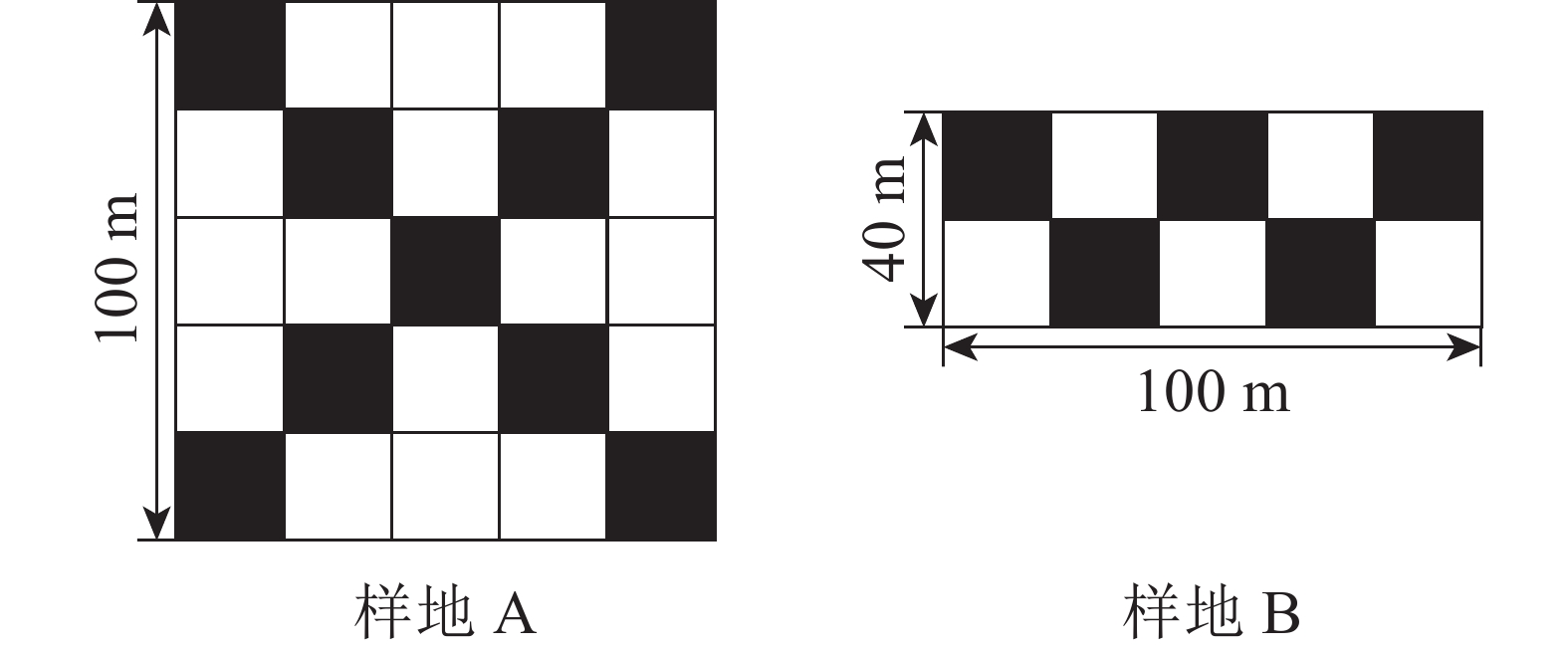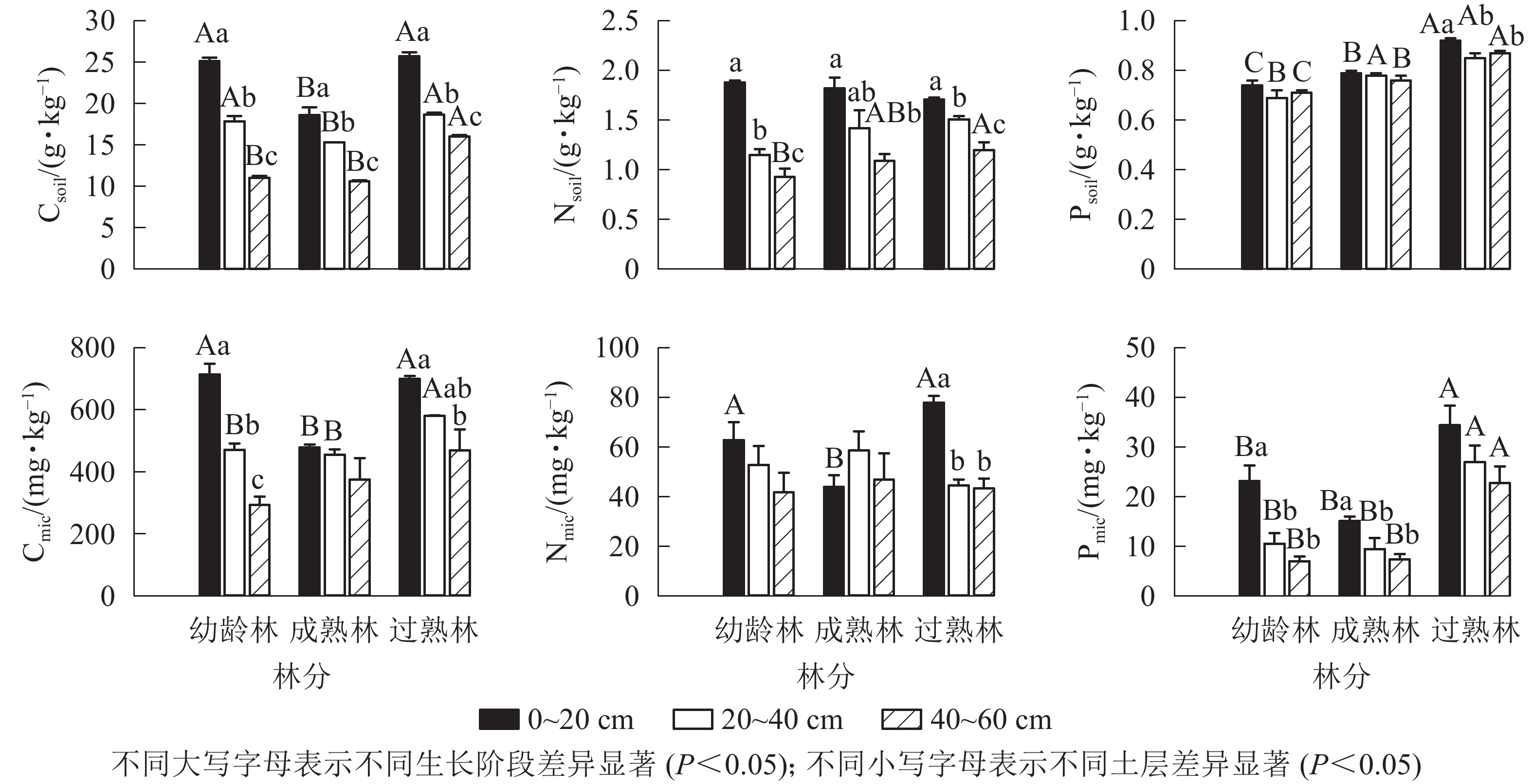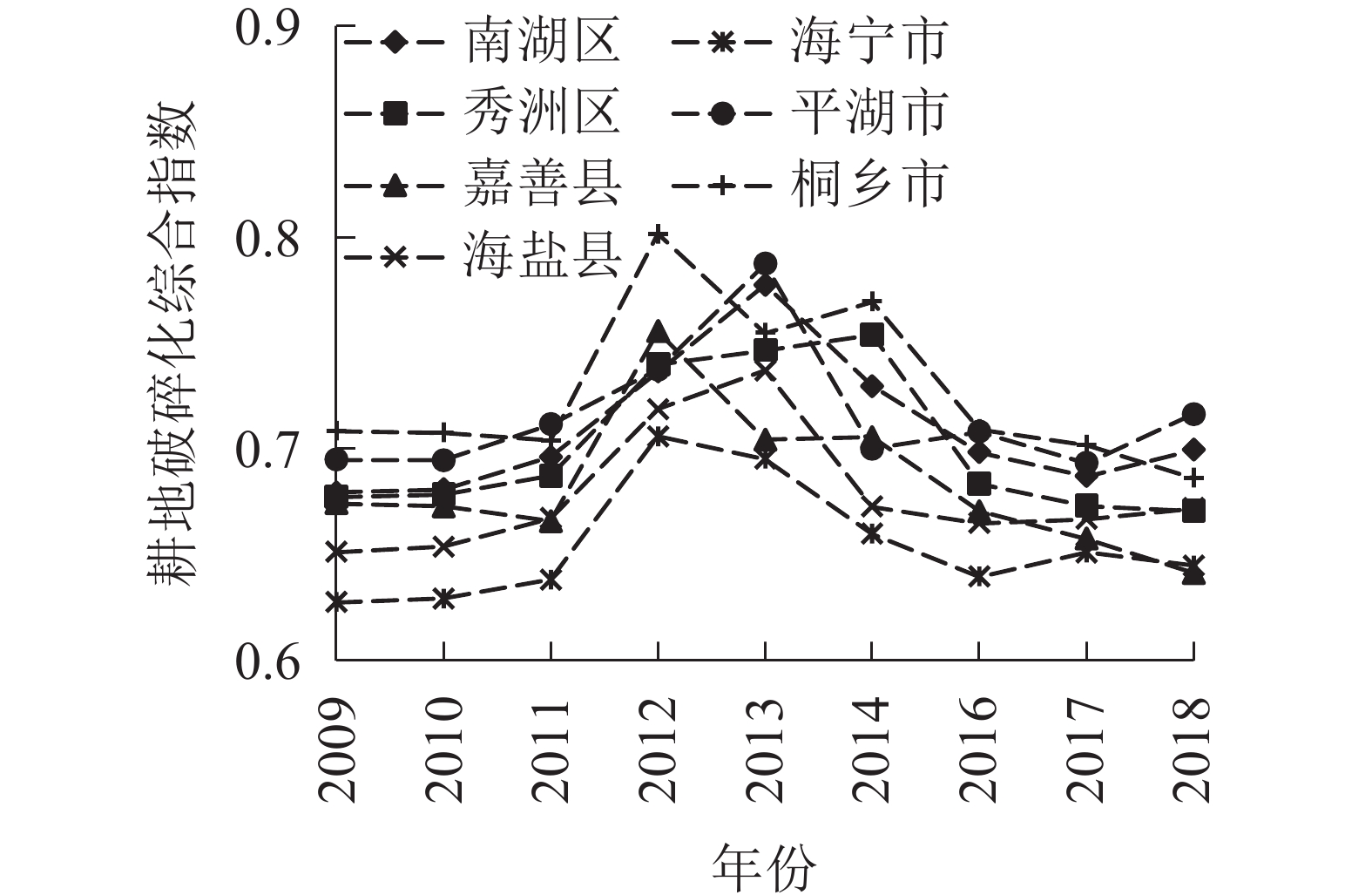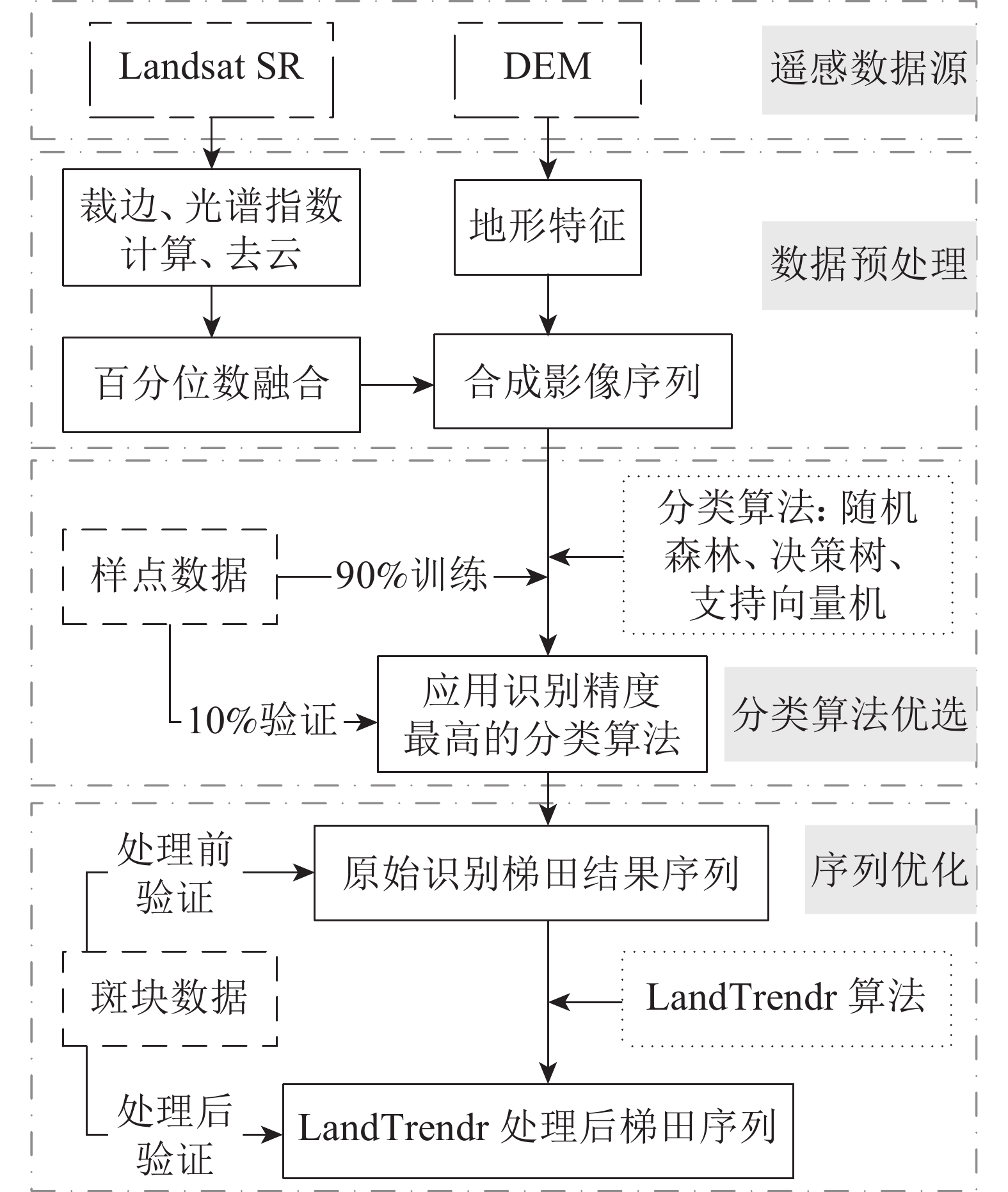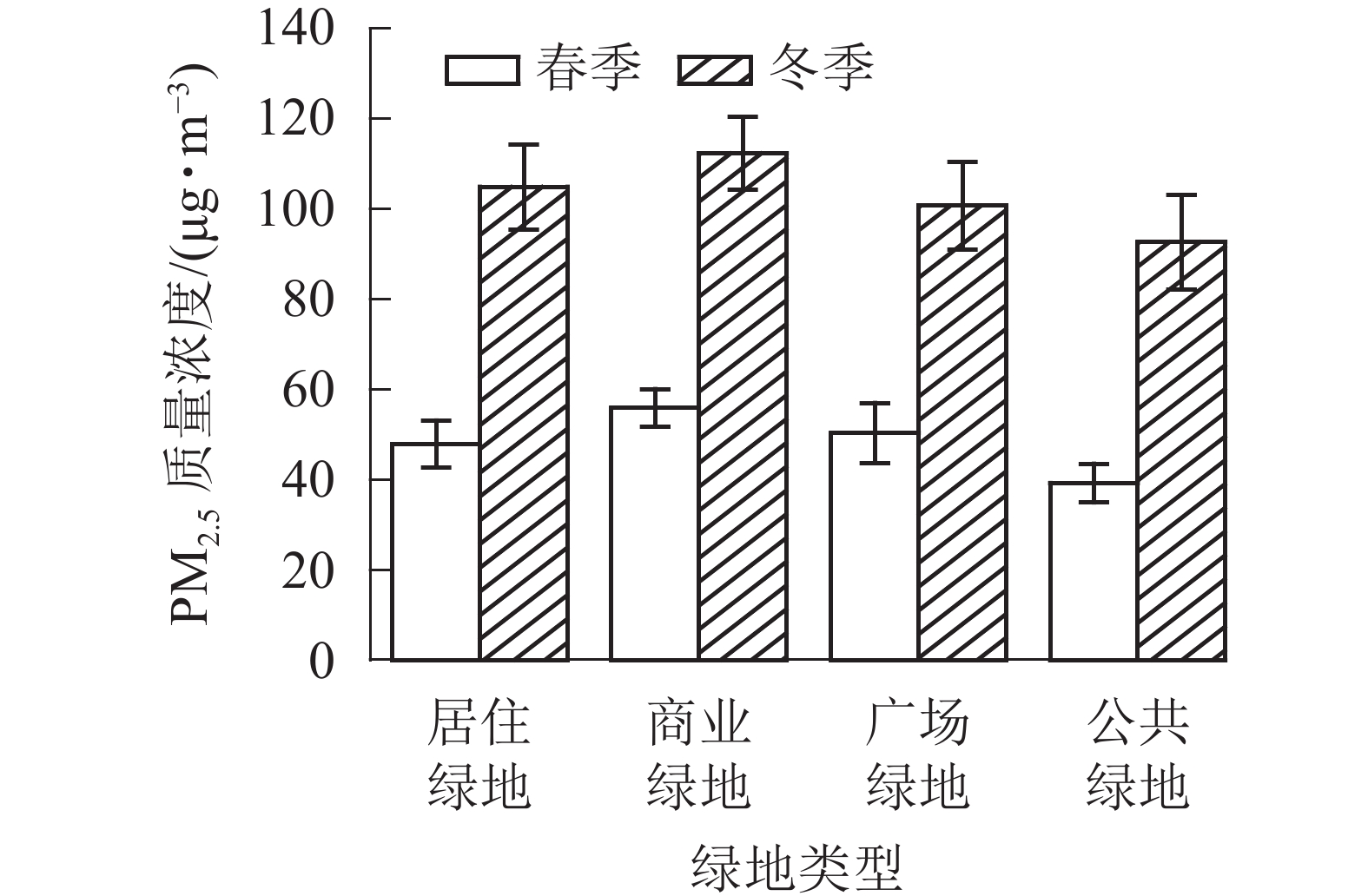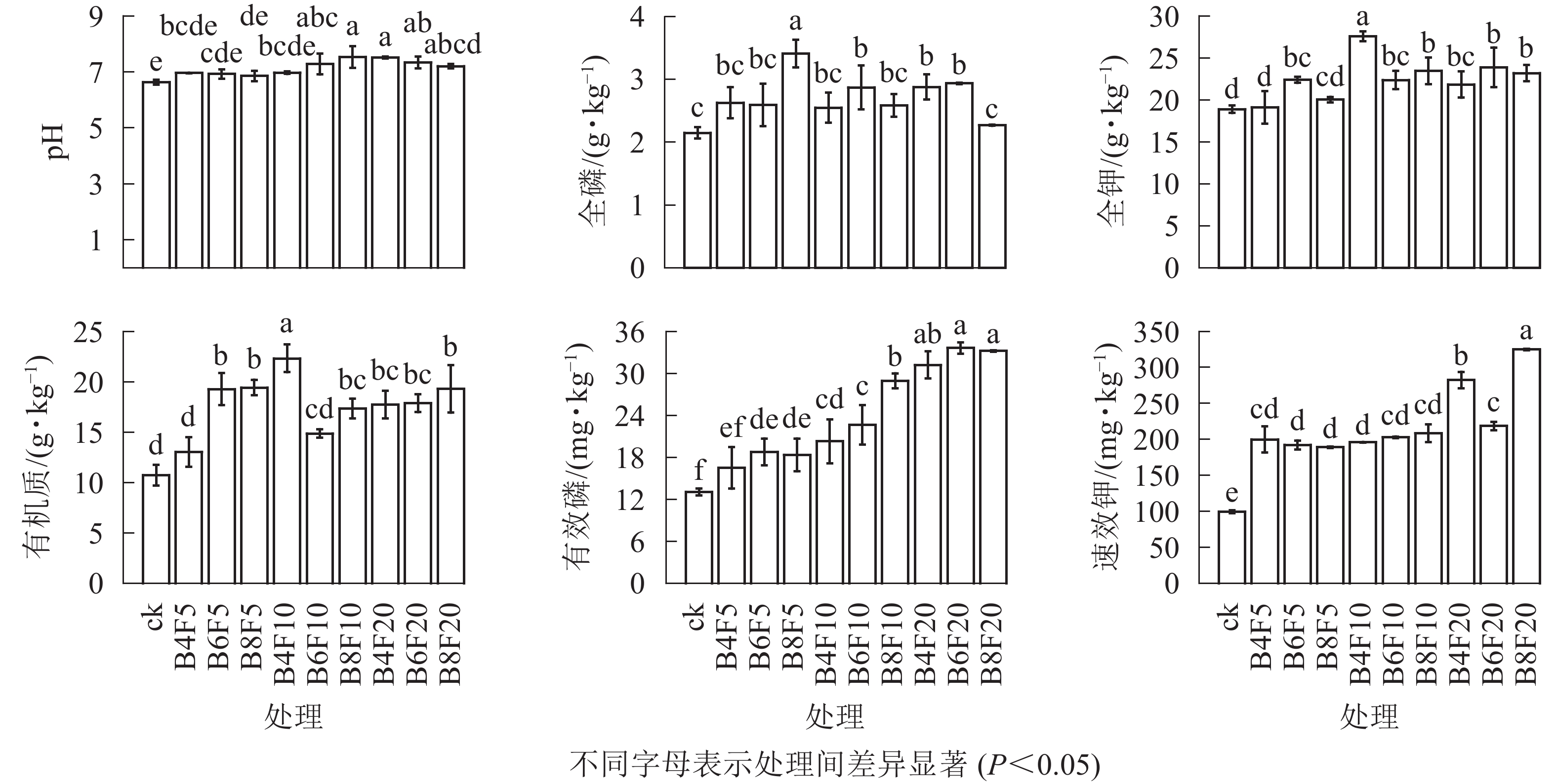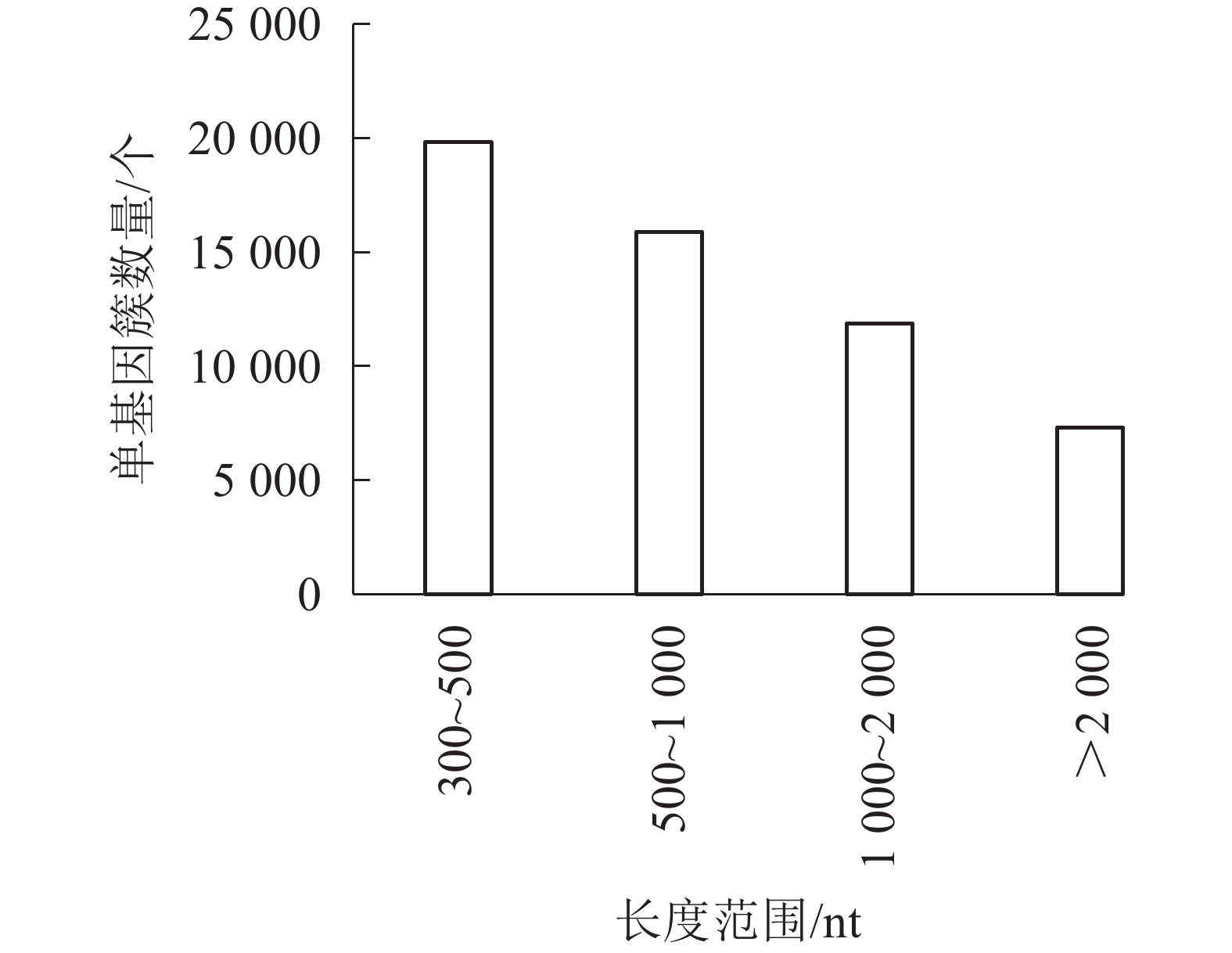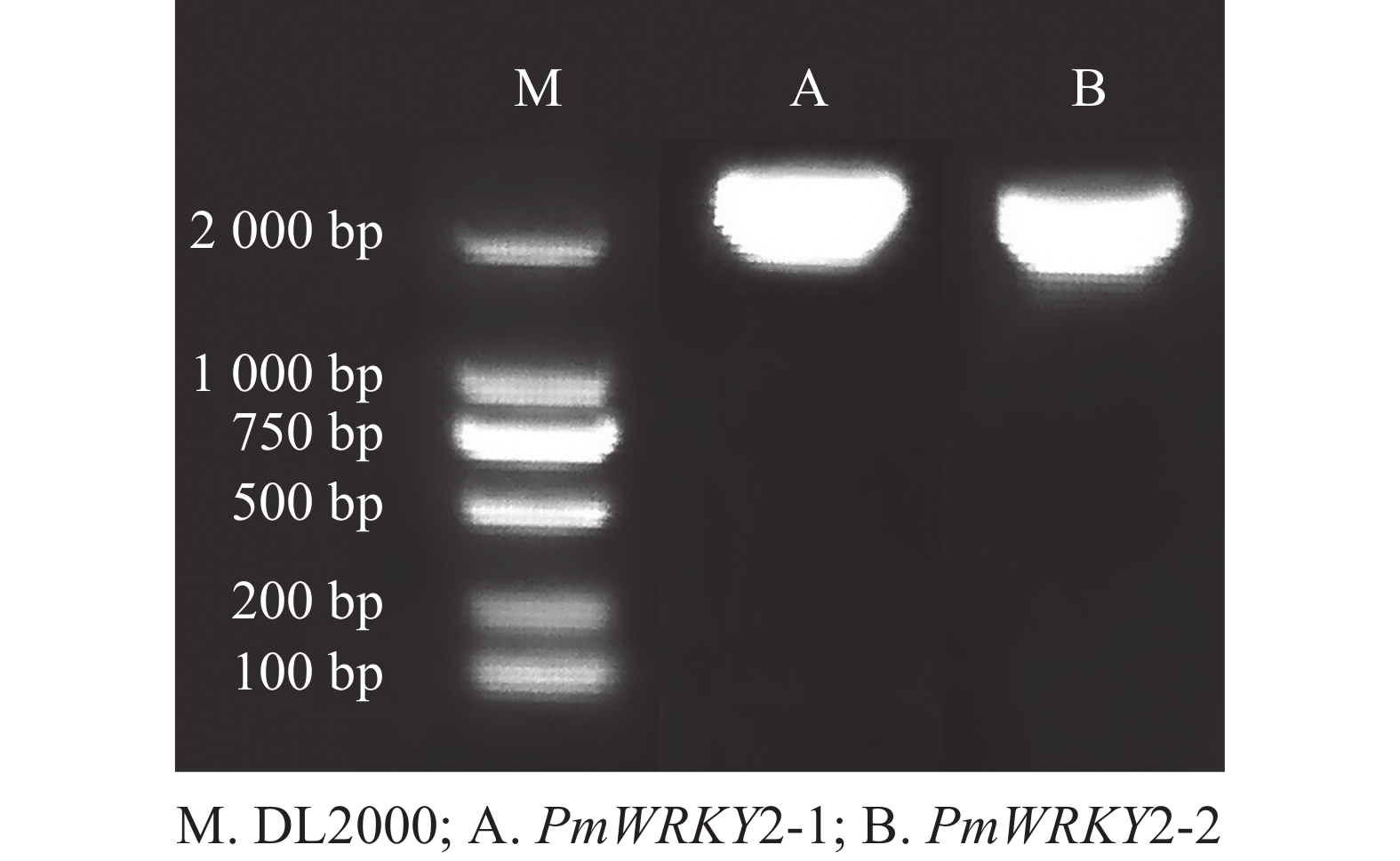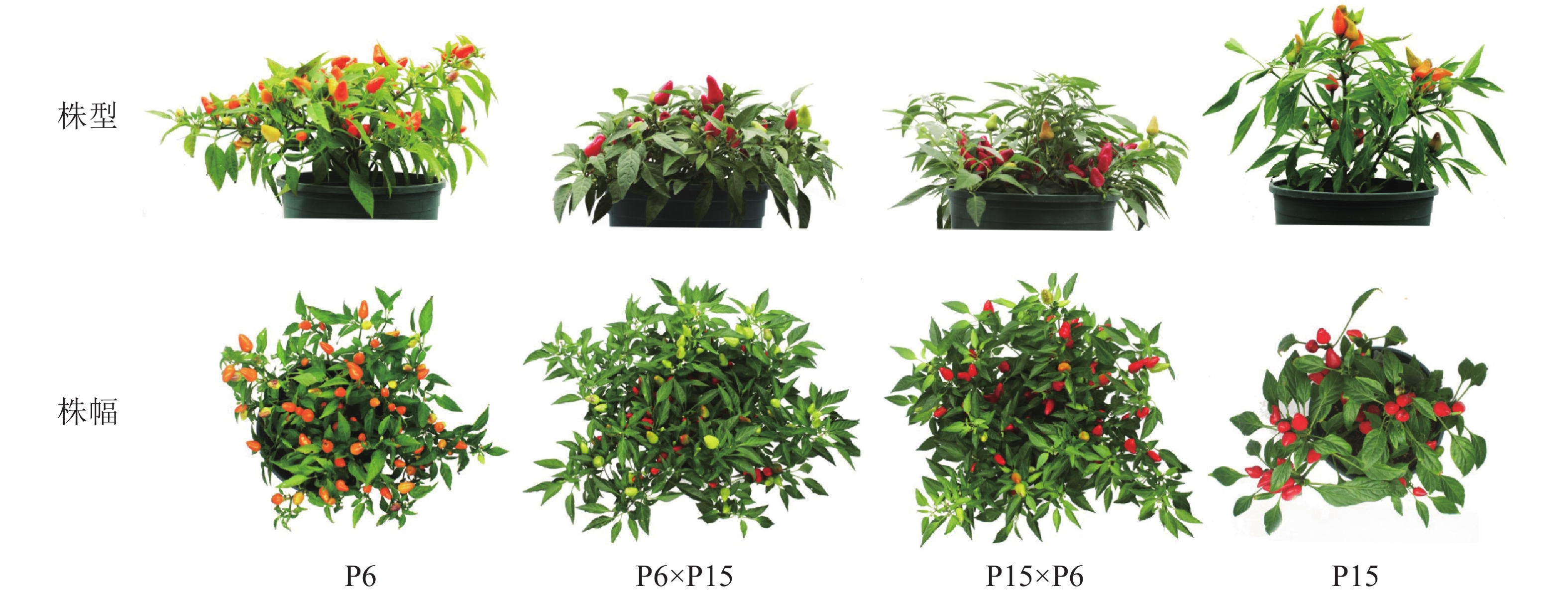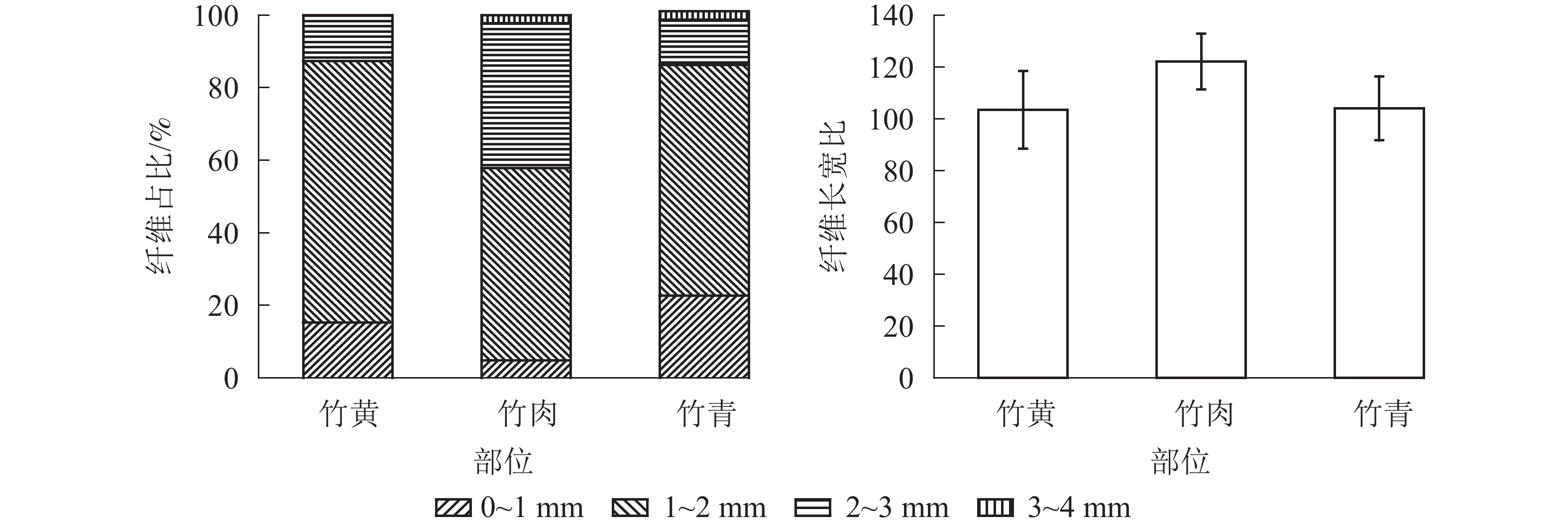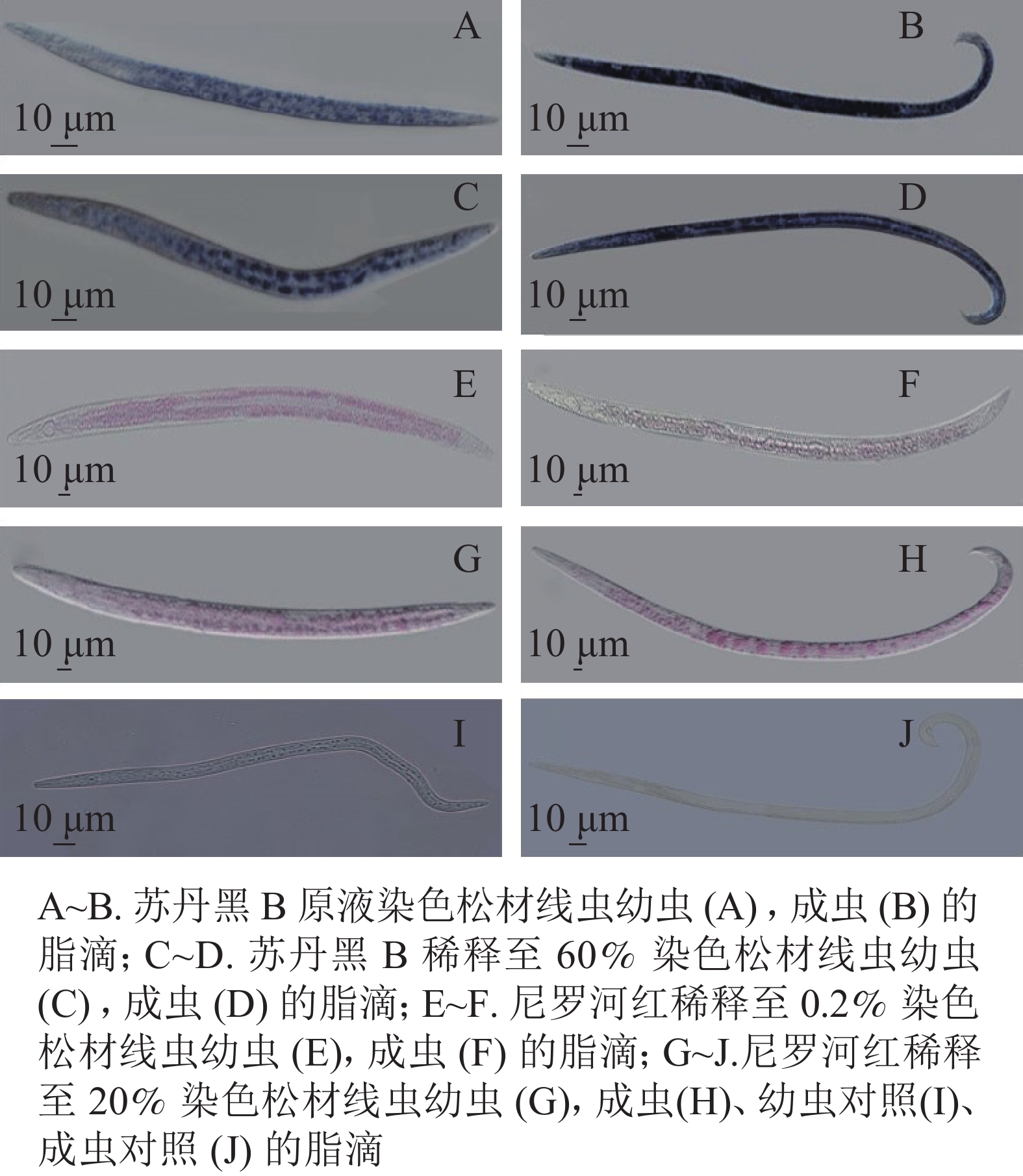2021 Vol. 38, No. 4
column
2021, 38(4): 659-670.
doi: 10.11833/j.issn.2095-0756.20200586
Abstract:
Objective To investigate the spatial distribution pattern and interspecific relationship of dominant tree species in the tree layer of natural secondary forest communities, and to provide a scientific basis for the restoration, rehabilitation and reforestation management of the secondary forest community in the region. Method This paper set up 1 hm2 (100 m×100 m) sample plot in each type of typical natural secondary forest communities (evergreen braod-leaved secondary forest, mason pine and broad-leaved mixed secondary forest and secondary forest of mason pine) in Jiande, Zhejiang Province. Based on the tally, the Pianka niche overlap index, point pattern analysis method, variance ratio method (VR), χ2-test and Spearman rank correlation coefficient were used to analyze the spatial distribution pattern and interspecific relationship of the dominant tree species in each community. Result (1) The dominant tree species in each type of secondary forest community showed an aggregate distribution on all scales; (2) In the 0−25.0 m scale, the spatial correlation of each community is dominated by insignificant correlations, and the number of species pairs showing negative correlation is more than the number of species pairs showing positive correlation; (3) The overall correlations between the dominant tree species of each community and the interspecific associations obtained by the χ2-test were mainly non-significant positive associations. Spearman rank correlation analysis results showed that the non-significant correlations were mainly among the species pairs in each community. The results of spatial correlation analysis and niche overlap of the dominant tree species in each community are in good agreement. Conclusion The above results show that the dominant tree species of each community are relatively independent in their respective distribution patterns. Although there are similar environmental resource requirements between species, the inter-species linkages are basically loose, and the community succession has not yet entered the mature stage. [Ch, 7 fig. 4 tab. 37 ref.]
2021, 38(4): 671-681.
doi: 10.11833/j.issn.2095-0756.20200565
Abstract:
Objective This study aims to investigate the interspecific relationship of natural forest of Nanmu with different dominant degrees in Shouchang Forest Farm of Jiande City, Zhejiang Province, so as to reveal the dynamic change rules of the interspecific association in the process of community development and succession. Method In 2015 and 2019, two natural forest plots with different dominance of Nanmu were investigated. Based on the 2×2 contingency table, the interspecific association of tree layer, shrub layer and herb layer of Nanmu under different stand conditions was studied by χ2 test, association coefficient, and percentage of co-occurrence. Result In 2015 and 2019, the overall interspecific association of tree layer was significantly positive, while that of shrub layer and herb layer tended to be negative. In the natural stands with Nanmu as associated tree, the correlation among tree layer, shrub layer and herb layer tended to be negative. In both stands, Nanmu showed stand fault phenomenon in vertical direction. In the tree layer, the association between Nanmu and other species was relatively independent, while the interspecific competition between Nanmu and other species in shrub layer and herb layer was intense. Conclusion In natural forests, thinning, selective cutting and other tending methods can be adopted when Nanmu is taken as the target tree species for management and protection. The tree species with significant positive correlation with Nanmu are retained and the tree species with negative correlation are cut down to ease the interspecific contradiction. Thinning tall trees in the upper layer and increasing the forest gap can meet the needs of illumination for renewal layer. Protecting the renewal layer is conducive to the formation of a complete vertical structure. [Ch, 7 fig. 4 tab. 22 ref.]
2021, 38(4): 682-691.
doi: 10.11833/j.issn.2095-0756.20200442
Abstract:
Objective The objective of this study is to explore the distribution characteristics of non-spatial structure and the correlation between non-spatial structure and productivity of coniferous and broad-leaved mixed forests in Zhejiang Province, so as to provide theoretical basis and technical support for improving forest quality. Method Based on the data of natural coniferous and broad-leaved mixed forest sample plots and sample wood from the consecutive forest resource inventory in 1999, 2004, and 2009, the diameter at breast height(DBH), tree height, volume, and non-spatial structure factors and accumulation per unit area of conifer species were extracted. Patterns of non-spatial structure distribution in each period was modeled to explore characteristics of change. The continuous function method of biomass conversion factor was used to estimate biomass and productivity, and then the partial correlation analysis between non-spatial structure and productivity was performed. Result There existed regular distribution characteristics of forest non-spatial structure factors in different periods. The non-spatial structure factors and productivity showed a positive correlation. From 1999 to 2009, the proportion of coniferous species in the coniferous and broad-leaved mixed forest in Zhejiang Province increased gradually, and the productivity in the first period (1.39 t·hm−2·a−1) was higher than that in the second period (1.15 t·hm−2·a−1). The mean value of DBH, tree height and volume per plant were approximately normal. Conclusion In the management of coniferous and broad-leaved mixed forests, priority should be given to the proportion of coniferous and broad-leaved mixed forest in order to maintain the high productivity of the forest stand. The proportion of species should be kept above 50% and the mixed forests with a low proportion of coniferous species should be artificially intervened. If DBH is lower than 10.00 cm, tending should be strengthened, and if DBH is higher than 12.00 cm, cutting should be carried out in time. The average volume and tree height of per plant should be maintained at 0.040−0.070 m3·plant−1 and 7.00−10.00 m respectively. [Ch, 6 fig. 5 tab. 34 ref.]
2021, 38(4): 692-702.
doi: 10.11833/j.issn.2095-0756.20200536
Abstract:
Objective The present study aims to investigate the soil-microbial stoichiometry of Eucalyptus urophylla × E. grandis plantation at young, mature, and overmature stages in order to enrich the basic research in the field of ecological stoichiometry of Eucalyptus plantation ecosystem. Method Three E. urophylla × E. grandis plantations at different growth stages in Leizhou Peninsula were selected as the research objects. Soil samples were collected from 0−20, 20−40, 40−60 cm soil layers respectively for measuring soil organic carbon (Csoil), total nitrogen (Nsoil), total phosphorus (Psoil), soil microbial biomass carbon (Cmic), nitrogen (Nmic), and phosphorus (Pmic), and the ratio among them was estimated to analyze the relationship between soil and microbial biomass. Result The mean values of soil organic carbon, total nitrogen, total phosphorus and soil microbial carbon, nitrogen and phosphorus were the highest in overmature forest, which were 20.15, 1.47, 0.88 g·kg−1 and 583.09, 55.20, and 28.03 mg·kg−1, respectively. The differences in different stages were not consistent. The vertical changes of soil organic carbon, total nitrogen, total phosphorus and microbial biomass carbon, nitrogen and phosphorus showed the characteristics of "surface aggregation", and the differences among soil layers in different growth stages were different due to different element types. The average values of Csoil/Nsoil and Csoil/Psoil in mature forest were 10.52 and 19.25, respectively, which were significantly lower than those in young and overmature forests (P<0.05). The mean value of Nsoil/Psoil in overmature forest was 1.67, which was significantly lower than that in young and mature forests (P<0.05). The average values of Cmic/Pmic and Nmic/Pmic on overmature stage were 21.25 and 2.00, which were significantly lower than those in other two stages (P<0.05). The ratio of soil microbial biomass carbon to soil organic carbon (Cmic/Csoil) had no significant difference at three stages. The ratio of soil microbial biomass nitrogen to soil total nitrogen (Nmic/Nsoil) and the ratio of microbial biomass phosphorus to soil total phosphorus (Pmic/Psoil) in overmature forest were significantly lower than those in other two stages (P<0.05). Redundancy analysis showed that Csoil, Csoil/Psoil and Nsoil were the primary influencing factors of soil microbe in young forest, mature forest and overmature forest, respectively. Conclusion The soil microbial biomass of E. urophylla × E. grandis plantation is the highest in the overmature forest stage, and is closely related to the soil chemical properties. The index and degree of soil microbes affected by the soil are different at different growth stages of the stand. The effect of nutrient availability on the growth and reproduction of soil microbe should be paid attention to at the later growth stage. [Ch, 4 fig. 2 tab. 54 ref.]
2021, 38(4): 703-711.
doi: 10.11833/j.issn.2095-0756.20200542
Abstract:
Objective With an investigation of the effects of expansion and eradication of Phyllostachys edulis (moso bamboo) on soil greenhouse gas emission flux and soil physical and chemical properties in Cunninghamia lanceolata (Chinese fir) forest, this paper is aimed to provide theoretical basis for the scientific management of moso bamboo expansion. Method Short-term in-situ monitoring was carried out of the soil greenhouse gas flux in pure moso bamboo forest (BF), Chinese fir released forest upon the eradication of moso bamboo from the Chinese fir forest mixed with moso bamboo (RF), moso bamboo and Chinese fir mixed forest (MF), and pure Chinese fir forest (CF) using a static chamber gas chromatography method. Result The expansion and eradication of moso bamboo increased the soil CO2 emission flux, which were 827.55, 485.09, 374.33 and 300.44 mg·m−2·h−1 for BF, RF, MF and CF respectively whereas the soil N2O emission flux were 120.86, 98.03, 82.89 and 70.23 µg·m−2·h−1, and the soil CH4 absorption flux were 155.38, 145.77, 135.26 and 119.62 µg·m−2·h−1. The soil temperature decreases from MF (19.77 ℃) to RF (18.72 ℃), BF (18.49 ℃) and CF (18.32 ℃) while the soil moisture content decreases from RF (27.32%) to CF (23.04%), BF (18.67%) and MF (16.36%). In these four different stands, the soil CO2 and N2O emission fluxes and CH4 absorption fluxes were significantly positively correlated with soil temperature and moisture content (P<0.01) with consistent dynamic changes and had a positive correlation with soil inorganic nitrogen (\begin{document}$ {\rm{NH}}^{+}_{4}\text{-}{\rm{N}} $\end{document} ![]()
![]()
\begin{document}$ {\rm{NO}}^{-}_{3}\text{-}{\rm{N}} $\end{document} ![]()
![]()
Conclusion The expansion and eradication of moso bamboo resulted in the increase of soil greenhouse gas emission flux in Chinese fir forest, which had a negative impact on the regional atmospheric environment. On the other hand, the soil temperature and soil water content were the main driving factors for the three kinds of greenhouse gas emissions, and could lead to the differences in greenhouse gas emissions among the four stands. [Ch, 5 tab. 50 ref.]
2021, 38(4): 712-722.
doi: 10.11833/j.issn.2095-0756.20200648
Abstract:
Objective With an analysis of the temporal and spatial evoluation characteristics of the thermal landscape in Haikou City, this study is aimed at solutions to the urban thermal environment problems that attribute to the rapid urbanization. Method With the five-phase Landsat remote sensing images of 2000, 2005, 2010, 2015 and 2019 gathered as the data source, a single-window algorithm was utilized to invert the surface temperature to study the temporal and spatial evolution of the thermal environment. Employing GIS platform and the method of geostatistics and landscape pattern index, we have conducted a quantitative analysis of the spatial and temporal differentiation characteristics of urban heat island. Result The area curve of the heat island intensity conforms to the normal distribution characteristics, and the patches of weaker cold island, weak cold island and weaker heat island persist in their dominant patterns. The heat island intensity reduces from the central concentration area to Jiangdong New District near the west coast and the old urban area in the southwest. In the temperature profile, the principal urban area is always a “plateau” area, with the industrial area and the Meilan Airport area often displaying “peak” values, and the large area of waters and forest land showing “valley” values. During the peried from 2000 to 2010, with the rapid expansion of the high temperature, the heat island plaques continued to shrink, while the large plaques gradually decomposed, making the shape of the plaques continuously cnhanced. During the peride from 2010 to 2019, with the expansion slowing down, the heat island plaques continued to expand, and the small plates gradually fitting together, making the change of patch shape stable, and the heat island effect continuously weakened. Throughout the study, the connectivity of thermal plaques of the same category was consistently high. Conclusion The evolution of Haikou’s thermal landscape is consistent with the different stages of urban development and the analysis of thermal landscape pattern index based on hierarchy theory is conductive understanding the temporal and spatial evolution of thermal landscape, provideing a theoretical basis for ecologically sustainable urban development planning. [Ch, 7 fig. 3 tab. 20 ref.]
2021, 38(4): 723-729.
doi: 10.11833/j.issn.2095-0756.20200682
Abstract:
Objective To promote regional agricultural development, this study is aimed to conduct an investigation of the temporal and spatial distribution and change trend of farmland fragmentation, an important factor that affects the agricultural production efficiency and large-scale management in China. Method With Jiaxing City of Zhejiang Province selected as the research area where the comprehensive index of farmland fragmentation of 7 county-level units in Jiaxing City from 2009 to 2018 was calculated, this paper makes an analysis of the change trend and spatio-temporal evolution characteristics of farmland fragmentation in different counties as well as a theoretical analysis of the driving factors. Result Spatially, the fragmentation of farmland in Jiaxing City has deomonstrated a gradual decrease from the middle to the North and South. In terms of time, the coefficient of variation of the comprehensive index of farmland fragmentation was 0.040 in 2009 and gradually increased to 0.057 in 2014. In 2012, Jiaxing promoted the comprehensive rural land consolidation on a large scale, which changed the trend increasing farmland fragmentation and reduced the spatial difference of farmland fragmentaion in each county, the coefficient of variation of the comprehensive index of farmland fragmentation decreased to 0.041 by 2018. Conclusion It is necessary to further promote the comprehensive consolidation of rural land, innovate and improve the renovation mode and include the control of fragmentation and the promotion of connectivity of farmland as part of farmland protection assessment so as to reduce the fragmentation of farmland. [Ch, 2 fig. 2 tab. 21 ref.]
2021, 38(4): 730-736.
doi: 10.11833/j.issn.2095-0756.20200673
Abstract:
Objective Terraces are the most important soil and water conservation measures and agricultural production measures in the Loess Plateau, the main region of soil and water loss and the key region of ecological environmental construction in China. The purpose of this study is to obtain the distribution information of loess terraces in a long time series efficiently and accurately, so as to monitor and evaluate soil and water loss in the Loess Plateau. Method Google Earth Engine (GEE), a cloud-based platform of remote sensing with high-performance computing resources, was used in this study. Guyuan City of Ningxia, a gully region of the Loess Plateau, was taken as the research area. The recognition accuracy of three machine learning algorithms, including random forest (RF), decision tree (CART) and support vector machine (SVM), was compared by using remote sensing image supervised recognition technology, and the optimized application of LandTrendr algorithm in long-time series dynamic monitoring was discussed. Finally, the distribution of terraces in Guyuan City in recent 30 years was obtained. Result (1) The order of identification accuracy of the three algorithms from large to small was RF, CART, and SVM. (2) Using random forest algorithm to identify terraces, the overall accuracy based on sample test was 94.10%, Kappa coefficient 0.87, and the overall accuracy based on field patch test was 93.33%, Kappa coefficient 0.80. (3) LandTrendr algorithm can effectively correct the errors in the time series and improve the accuracy of time series identification. (4) From 1988 to 2019, the area of terraces in Guyuan decreased by 45.90%. (5) The time to use terraces in the west of Guyuan was longer than that in the east. Conclusion The RF machine learning algorithm combined with LandTrendr algorithm on GEE can efficiently and accurately monitor long-term and large-scale loess terraces. In the past 30 years, the proportion of terrace agriculture in Guyuan City has gradually declined, which promotes the sustainable development of ecological environment. [Ch, 4 fig. 3 tab. 22 ref.]
2021, 38(4): 737-745.
doi: 10.11833/j.issn.2095-0756.20200558
Abstract:
Objective This study aims to analyze the spatio-temporal variation of heavy metal concentration in PM2.5 in urban green space and probe into its influencing factors, so as to provide reference for scientific planning of urban green space and improvement of the quality of human settlement environment. Method Four kinds of green space in Lin’an District of Hangzhou were taken as the research objects, including residential green space, commercial green space, square green space and public green space. The intelligent medium volume TSP sampler was used to collect the airborne PM2.5. The component and mass concentration of heavy metals in the samples were detected by the inductively coupled plasma mass spectrometer (ICP-MS), and their sources were analyzed. Result The average concentrations of heavy metals in four kinds of green space were higher in winter [(950.13±90.15) ng·m−3] than those in spring [(843.55±80.70) ng·m−3]. The average concentrations of heavy metals ranging from large to small in these two seasons were commercial green space [(1 023.18±94.10) ng·m−3], residential green space [(942.20±89.20) ng·m−3], square green space [(861.85±84.05) ng·m−3] and public green space [(760.18±80.48) ng·m−3]. The heavy metals in green space mainly came from complex pollution sources (natural sources, road dust, vehicle exhaust and industrial pollution), coal-based industrial sources and traffic sources, etc. Conclusion Reasonable increase of green space area can effectively reduce the heavy metal pollution in cities. Controlling traffic flow around commercial green space and promoting new energy vehicles can significantly lower the heavy metal concentration. [Ch, 6 fig. 2 tab. 41 ref.]
2021, 38(4): 746-755.
doi: 10.11833/j.issn.2095-0756.20200547
Abstract:
Objective Puzhehei watershed has a unique natural landscape and a special karst lake ecosystem. This study aims to investigate the distribution characteristics of heavy metals in lake sediments and make ecological risk assessment, which is of great significance to the protection and pollution control of lake water environment in the region. Method The levels of six types of heavy metals (As, Cr, Cu, Zn, Mn, and Ni) in surface water and sediments in the basin were analyzed by geo-accumulation index evaluation and potential ecological risk index, and ecological risks of heavy metals were evaluated and the source was traced back. Result (1) The mass concentration of heavy metals in the surface water of Puzhehei Basin was far below the Class Ⅰ standard limit of “Surface Water Environmental Quality”. (2)The average mass fraction of heavy metal in the sediments was higher than their corresponding background values (except Cr). (3)The average value of heavy metals in the sediments detected was Mn, Zn, Cu, Cr, Ni and As in descending order, which were 1.68, 1.33, 3.33, 0.96, 1.01 and 1.59 times of their background values, respectively. The pollution degree of Ni was the lowest, with 96.6% of the sampling points being clean. As was moderately polluted, which was 1.8 times of Mn, and the clean level of Mn was similar to that of light pollution. (4)The ecological risk index of individual heavy metal in descending order was As, Cu, Ni, Cr, Mn and Zn, and the potential ecological risk index values were all less than 40, indicating low risk. Conclusion As and Cu are the two heavy metals with the largest pollution range and the highest degree in Puzhehei watershed, while Cr, Ni and Zn are mostly pollution-free. In the potential ecological risk evaluation, the average ecological risk index is 31.7. As and Cu contribute most to this risk, and all heavy metals are at low ecological risk. From the perspective of spatial distribution, the National Wetland Park in the lower reaches of the river basin and the estuaries of the three rivers are the main gathering areas of heavy metals. [Ch, 6 fig. 7 tab. 40 ref.]
2021, 38(4): 756-764.
doi: 10.11833/j.issn.2095-0756.20200709
Abstract:
Objective As pH is a key factor affecting the migration and release of nutrients in the ditch sediment, this study, with an investigation of the dynamic changes of nutrient release and migration in the bottom mud of mountainous rural ditches under different pH conditions, is aimed to provide a theoretical basis for rural ecological environment management. Method With the bottom mud of typical mountainous rural ditches in the Dianchi Lake Basin collected, indoor simulation experiments were conducted to determine the nutrient salt content of the bottom mud and the overlying water under different pH (pH 5.5, 7.5, 9.5, 11.5) conditions under non-sterilized and sterilized treatments after which the nutrient release flux at the sediment-water interface was estimated. Result The mass fraction of total nitrogen (TN) in the bottom sludge decreased with the increase of pH. The total nitrogen release flux under the strong alkaline (pH 11.5) and acidic (pH 5.5) conditions of the non-sterilized group was 8 and 4 times of the control (pH 7.5), and its release flux in the sterilization group was 2 times of that in the control. The mass concentration and release flux of soluble total phosphorus (DTP) in the overlying water increased with the increase of pH. The release of DTP under the conditions of strong alkaline (pH 11.5) and weak alkaline (pH 9.5) in the non-sterilized group was 12 and 4 times of that in the control, respectively, and its release flux in the sterilized group was 30 and 15 times of that in the control while the non-sterilized group had higher DTP release flux than the sterilized group. RDA shows that acidic conditions promote the release of calcium-bound phosphorus (Ca-P) in sediments, and alkaline (pH≥9.5) conditions promote the release of total nitrogen, total phosphorus and iron-aluminum-bound phosphorus (Fe/Al-P). Neutral (pH 7.5) conditions have little effect on the release of nitrogen or phosphorus in the sediments. Conclusion Alkalinity (pH≥9.5) and acidity significantly promote the release of nitrogen and phosphorus nutrients in the bottom mud of mountain rural ditches, and the release amount is the smallest under neutral conditions. Also, the sterilization of the bottom sludge reduces the microbial activity at different pH levels, and prevents the migration and release of nitrogen and phosphorus in the bottom sludge of mountain and rural ditches to the overlying water. [Ch, 6 fig. 1 tab. 36 ref.]
2021, 38(4): 765-773.
doi: 10.11833/j.issn.2095-0756.20200651
Abstract:
Objective The purpose of this study is to evaluate the effects of swine manure hydrochar on soil organic carbon mineralization, pH, conductivity and nutrients, in order to provide a theoretical basis for the practical application of swine manure hydrochar. Method The hydrochar was prepared by swine manure under 180 ℃ for 1 h, and mixed with soil at the mass fraction of 0(ck), 1%, 2%, and 4% for cultivation experiments. Result Swine manure hydrochar could improve soil mineralization rate, soil mineralization potential, and soil organic carbon turnover rate. When the mixing ratio was 4%, the cumulative mineralization of soil increased by 1.52 times. The pH value of soil decreased from 7.17 to 6.67−6.98 during the cultivation process, and the overall trend of change was first down and then up. The mass fraction of soil available nitrogen and available phosphorus decreased to the lowest level on the 10th and 15th day and then increased. The soil electrical conductivity and nutrient composition increased with the addition of hydrochar. When the mixing ratio was 4%, the soil electrical conductivity, total organic carbon, water-soluble organic carbon, available nitrogen, available phosphorus and available potassium increased by 58.9%, 54.3%, 146.4%, 27.4%, 591.2% and 88.6%, respectively. Conclusion Swine manure hydrochar can accelerate the mineralization of soil organic carbon and significantly improve soil nutrient content, and is a suitable soil amendment. [Ch, 6 fig. 3 tab. 40 ref.]
2021, 38(4): 774-783.
doi: 10.11833/j.issn.2095-0756.20200723
Abstract:
Objective This objective is to investigate the effects of combined application of bamboo charcoal and organic fertilizer on soil fertility and growth of Brassica oleracea var. capitata f. rubra in dry red soil of Yuanmou area, Yunnan Province. Method Three levels of bamboo charcoal mass fraction (4%, 6%, 8%) and three levels of organic fertilizer (5, 10, 20 t·hm−2) were set up in the experiment. A total of 10 treatments were designed with 3×3 complete scheme and blank treatment (ck) as control. The photosynthetic characteristics of leaves were measured once a month from September to December. After the B. oleracea var. capitata f. rubra was harvested at the end of December, soil samples were collected from 0−20 cm soil layer to determine the soil nutrient contents, as well as the yield and quality of B. oleracea var. capitata f. rubra. Result Combined application of bamboo charcoal and organic fertilizer increased soil pH, organic matter, total phosphorus, available phosphorus, total potassium and available potassium, and improved the net photosynthetic rate, yield and quality of B. oleracea var. capitata f. rubra, with significant differences among treatments (P<0.05). Compared with the control, the pH value in B8F10 treatment was the highest, which increased by 0.9 units. The contents of organic matter and total potassium were the highest in B4F10 treatment, with an increase of 107.93% and 46.06%, respectively. Total phosphorus content was the highest in B8F5 treatment, with an increase of 58.67%. Available phosphorus content was the highest in B6F20 treatment, with an increase of 157.44%, and available potassium content was the highest in B8F20 treatment, with an increase of 226.60%. Compared with the control, except for B8F5 treatment, the average net photosynthetic rate in leaves of B. oleracea var. capitata f. rubra at each stage increased by 1.14%−23.54%, and the average transpiration rate and intercellular CO2 concentration in leaves of B. oleracea var. capitata f. rubra increased by 3.01%−43.52% and 2.33%−9.11%, respectively. Except for B4F5 treatment, the mean value of stomatal conductance of leaves increased by 2.33%−39.54%. B6F10 treatment had the highest yield-increasing effects, soluble protein and anthocyanin contents. Conclusion Combined application of bamboo charcoal and organic fertilizer can continuously supply nutrients for B. oleracea var. capitata f. rubra, also promote its growth, yield and quality. Appropriate amount of organic fertilizer (10 t·hm−2) with bamboo charcoal (6%) has better effect on growth promotion, yield increase and quality improvement.[Ch, 4 fig. 2 tab. 34 ref.]
2021, 38(4): 784-791.
doi: 10.11833/j.issn.2095-0756.20200593
Abstract:
Obejective This study aims to explore the effect of different fertilization on nitrogen and phosphorus content in farmland in Xianju County, Zhejiang Province. Method A rice/Chinese cabbage rotation experiment was conducted to study the change of four fertilization treatments to crop yield, fertilizer absorption, runoff-driven N and P loss. The four treatments were no fertilizer application (ck), pure chemical fertilizer application (FP), 50% organic fertilizer replacement (CM) and carbon-based fertilizer application (CC). Result Compared with ck, the yield of rice and Chinese cabbage under three fertilization increased significantly by 33.5%−42.5% and 26.0%−31.8%, respectively. But there was no significant difference among three fertilizer treatments. Compared with ck, nitrogen absorption in Chinese cabbage increased by 33.8%−53.6%, whereas those of CM treatment were significant higher than others. Phosphorus absorption increased by 163.5%−267.8%, and the increase between different treatments was CM>FP>CC>ck. However, there was no significant difference among each treatment (P<0.05). For rice, runoff volume of nitrogen and phosphorus under three fertilization treatments was 13.49−15.32, 2.19−2.61 kg·hm−2, and runoff rate was 3.5%−4.2%, 2.0%−2.4%, respectively. For Chinese cabbage, nitrogen and phosphorus loss was 6.33−6.82, and 0.35−0.44 kg·hm−2, runoff rate was 1.3%−1.6%, 0.1%−0.4%, respectively. However, there was no significant difference among three fertilization treatments.While maintaining the same nutrient equivalent. There was no significant difference betweenpure chemical fertilizer application, 50% organic fertilizer replacement and carbon-based fertilizer application. [Ch, 3 fig. 4 tab. 25 ref.]
2021, 38(4): 792-801.
doi: 10.11833/j.issn.2095-0756.20200544
Abstract:
Objective This study aims to explore the nature and structural features of general regulatory factor(GRF) gene family in moso bamboo(Phyllostachys edulis) and its expression levels in different tissues, so as to lay the foundation for further study on the molecular mechanism of GRF in growth and development of Ph.edulis. Method Bioinformatics approach was used to analyze the whole genome and transcriptome information of Ph. edulis, and 13 members of GRF gene family were selected and analyzed for their physicochemical properties, evolution, gene structure, conserved domains, promoters, gene family expression patterns, and tertiary structure. Result Members of the GRF gene family in Ph. edulis were named PeGRF01~PeGRF13 according to their distribution on the scaffold. PeGRF04 and PeGRF12 with 3 introns were classified as non-ε group, and the rest were ε group. The physicochemical properties of the members of each GRF gene family differed, but their domains were relatively conservative, all containing 14/3/3 domains. The promoter region of GRF family in Ph. edulis contained a large number of cis-acting elements related to light response, low temperature response, and hormone regulation. The gene duplication and amplification in PeGRF was significantly higher in collinearity with Oryza sativa than with Arabidopsis thaliana. PeGRFs were expressed in different tissues and organs, and the expression levels of each family member were different. The expression levels in panicle and root tissues of Ph. edulis were slightly higher than those in leaf and rhizome, and there were some differences among family members. The GRF protein was composed of 2 monomers, each of which was composed of 9 α-helices, and the overall structure was W-shaped. Conclusion The GRF gene family of Ph. edulis has a typical 14/3/3 domain, which may be involved in the development of roots, rhizomes, leaves, panicles and shoots. [Ch, 6 fig. 1 tab. 39 ref.]
2021, 38(4): 802-811.
doi: 10.11833/j.issn.2095-0756.20200529
Abstract:
Objective High temperature in summer can lead to growth restriction, shorter flowering period and lower ornamental quality of Paeonia suffruticosa. This study aims to explore the molecular mechanism of heat stress induced by heat tolerance genes in P. suffruticosa. Method Using P. suffruticosa ‘Yuhong’ as material, transcriptome sequencing of leaves treated with high temperature (40 ℃) and room temperature (25 ℃) was conducted to analyze the differentially expressed genes in response to high temperature. Meanwhile, the differential genes were verified by real-time fluorescence quantitative PCR (qRT-PCR), and the spatio-temporal expression of heat shock protein gene HSPs was analyzed. Result A total of 45.97 Gb data were obtained by sequencing. Compared with the control group (25 ℃), 4 220 genes were up-regulated and 3 453 genes were down-regulated after high temperature treatment. Through gene ontology (GO) analysis, it was found that these differential genes were mainly concentrated in biological processes such as metabolism, cellular components such as cell and membrane structure, and molecular functional items such as binding and catalytic activity. In addition, genome-wide and metabolic pathway database (KEGG) analysis showed that the number of differential genes in carbon metabolic pathway was the largest. Quantitative analysis of heat shock protein PsHSP gene showed that the expression of PsHSP gene increased with the time of high temperature treatment, reached the peak at 24 h, and then showed a downward trend. Conclusion High temperature significantly affects the metabolism and synthesis of P. suffruticosa, and further affects its growth and development. PsHSP gene can rapidly respond to high temperature stress in a short time and participate in heat tolerance regulation in P. suffruticosa. [Ch, 4 fig. 6 tab. 34 ref.]
2021, 38(4): 812-819.
doi: 10.11833/j.issn.2095-0756.20200706
Abstract:
Objective Low temperature is a main environmental factor that influences the cultivation and application of Prunus mume whereas WRKY gene is a plant-specific transcription factor which participates in the response to abiotic stress process. This study, with an investigation of how WRKY gene responds to low temperature and drought stress, is aimed to provide guidance for the directional breeding of P. mume. Method With the P. mume ‘Guhong Zhusha’ cDNA template selected as the substance, two WRKY2 genes were cloned by means of RT-PCR, named as PmWRKY2-1and PmWRKY2-2 before their expression patterns were under low temperature and in the condition of drought employing real-time quantitative PCR (qRT-PCR). Result a) PmWRKY2-1 and PmWRKY2-2, with respective coding area lengths of 2 223 and 2 220 bp, encode 740 and 739 amino acids respectively, both including 2 WRKY domains and a C2H2 zinc finger structure; b) though with a distant genetic relationshp with each other, both PmWRKY2-1 and PmWRKY2-2 had a close relationship with P. avium, P. persica and P. dulcis; c) according to the results of the real-time quantitative PCR (qRT-PCR), both PmWRKY2-1 and PmWRKY2-2 could be induced by low temperature and drought treatment And d) the expressions of PmWRKY2-1 and PmWRKY2-2 were significantly reduced after abscisic acid (ABA) treatment. Conclusion PmWRKY2-1 and PmWRKY2-2 are likely to participate in the regulation of low temperature and drought response of P. mume, yet might be subject to the regulation by ABA. [Ch, 6 fig. 1 tab. 28 ref.]
2021, 38(4): 820-827.
doi: 10.11833/j.issn.2095-0756.20200745
Abstract:
Objective This research aims to explore the heterosis of ornamental pepper and the genetic law of ornamental traits, to promote the cultivation of new varieties of ornamental pepper and the retention of excellent traits. Method The oval leaf inbred line (P15) of cluster pepper (Capsicum annuum ‘Salsa XP Red’) and the lanceolate leaf inbred line (P6) of single pepper (C. annuum ‘Salsa Deep Orange’) were used as parents, an orthogonal combination P6×P15 and an inverse combination P15×P6 were configured, and F2 population was constructed to explore the inheritance of fruit bearing pattern, leaf shape and plant type of ornamental pepper. Result There were significant differences between P6 and P15 in leaf size, plant height and number of lateral branches (P<0.05). All F1 combinations of cross ornamental pepper showed high heterosis in plant height, plant width and leaf shape. In F2 population of reciprocal cross, the descending order of agronomic characters with the largest variance was leaf length, fruit number per plant, petiole length, plant width and plant height, and there was a significant correlation between plant type and leaf type traits (P<0.01). The Chi-square test showed that in the results of the segregation ratio of quality traits in the F2 generations of reciprocal crosses, the fruit cluster traits were inherited in a single gene recessively for solitary traits and limited growth versus infinite growth. The developmental plant type versus the erect plant type and the lanceolate leaf versus the oval leaf were both controlled by two genes, and had recessive epistasis. Conclusion There are significant differences between ornamental pepper hybrid parents and F1 generation in 5 traits, such as the number of fruit per plant and the number of branching grades. Among them, the coefficient of variation of plant type is the smallest, the coefficient of variation of fruit weight and fruit number per plant is larger, and the difference of leaf length and fruit number per plant is the most significant. The analysis of the inheritance law of the important traits of ornamental pepper reveals that the fruiting bearing pattern of clusters versus solitary and limited branch versus infinite branch are recessive genetic traits controlled by single gene.[Ch, 2 fig. 8 tab. 22 ref.]
2021, 38(4): 828-836.
doi: 10.11833/j.issn.2095-0756.20200606
Abstract:
Objective The objective of this study is to investigate the physiological response of six cultivars of Osmanthus fragrans to low temperature stress and evaluate their cold resistance, so as to facilitate their popularization and application. Method The detached leaves of six cultivars of O. fragrans were used as experimental materials under artificial low temperature stress, with a total of 8 temperature gradients of 0, −4, −8, −12, −16, −20, −24, −28 ℃. Their physiological indexes such as relative conductivity (REC), malondialdehyde (MDA), soluble sugar (SS), soluble protein (SP), superoxide dismutase (SOD) and peroxisome (POD) were measured. The response of several cultivars of O. fragrans to low temperature stress was studied by the membership function method, and the cold resistance evaluation was completed. Result The changes of REC of six cultivars under different low temperature stress were S-shaped curve. Combined with logistic regression analysis, the semi-lethal temperature of each cultivar was calculated. ‘Aoshuang’ and ‘Dongrong’ had lower values, which were −12.95 and −11.80 ℃ respectively, and ‘Yinbi Shuanghui’ had the highest value of −8.15 ℃. Under low temperature stress, the MDA content in leaves of six cultivars of O. fragrans increased first, then decreased and then increased with the decrease of temperature, and the rangeability of each cultivar was different. With the decrease of temperature, the content of SS and SP of all cultivars increased first and then decreased, but the increasing range and inflection point temperature were not the same. The SOD activity of ‘Luocai No.1’ and ‘Aoshuang’ showed a trend of “up–down–up–down”, while the SOD activity of other cultivars showed a trend of first up and then down. The change trend of POD activity in different cultivars was different. The POD activity of ‘Yongfu Huancai’ and ‘Yinbi Shuanghui’ generally showed an upward trend at first and then a downward trend, and the POD activity of ‘Luocai No.1’, ‘Luocai No.2’, ‘Aoshuang’ and ‘Dongrong’ showed a trend of “down–up–down”. The cold resistance of six cultivars was evaluated by the membership function method, and the order of cold resistance from strong to weak was ‘Aoshuang’, ‘Dongrong’, ‘Luocai No.2’, ‘Luocai No.1’, ‘Yongfu Huancai’, and ‘Yinbi Shuanghui’. Conclusion Under low temperature stress, the physiological and biochemical indexes of leaves of six cultivars of O. fragrans change significantly. According to the membership function method, the three cultivars ‘Aoshuang’, ‘Dongrong’, and ‘Luocai No.2’ can better adapt to the temperature in northern China. [Ch, 6 fig. 2 tab. 35 ref.]
2021, 38(4): 837-845.
doi: 10.11833/j.issn.2095-0756.20200522
Abstract:
Objective Dalbergia has high economic value and its wild population has been seriously damaged. With the aggravation of climate change, the population distribution of Dalbergia is highly uncertain. Therefore, it is urgent to understand the future development trend of the species for better protection. Method Based on the current climate and environment factors, the suitable distribution areas of 7 rare tree species of Dalbergia listed in the China biodiversity red list were predicted by using the MaxEnt model, and the changes of distribution areas under different climate scenarios in the future were analyzed. Result The annual mean temperature, isothermal property, seasonal variation coefficient of air temperature, precipitation in the hottest season, precipitation in the driest month, precipitation in the driest season, soil calcium carbonate content and slope were the key environmental factors affecting the distribution simulation of 7 species of Dalbergia rare trees. Except D. hupeana, the rare trees of Dalbergia would obtain more suitable distribution area in the future. The suitable distribution area and optimum distribution area of D. hupeana decreased by 30.8% and 49.3% respectively. Conclusion The future distribution of different species of the same genus has different responses to climate change due to the differences in distribution areas, so the future conservation efforts should focus on species such as D. hupeana, which are suitable for reduced distribution area. [Ch, 3 tab. 39 ref.]
2021, 38(4): 846-853.
doi: 10.11833/j.issn.2095-0756.20200562
Abstract:
Objective With an investigation of the structural changes of the endophytic bacterialflora of pine stems, pine needles and pine roots, this study is aimed to fully explore the endophytic bacterial resources of Pinus massoniana. Method DGGE and high-throughput sequencing technology was employed in the exploration of the structural changes of endophyticbacterial flora of three-year-old P. massoniana trees upon the infection of Bursaphelenchus xylophilus disease. Result (1) There was a significant diversity in the endophytic bacterial community structure in different parts of P. massoniana trees with the diversity decreasing from the pine stem to pine needles and to the root system. (2) There was significant increase in parts of the bacterial genera in pine stems after 15 days of infection, whereas there were no symptoms shown on the surface of the seedlings. (3) Of the 442 genera of endophytic bacteria detected in P. massoniana that fall into 35 phyla, 49 classes, 110 order and 210 families, the relative abundance of Methylobacterium, Sphingomonas, Hymenobacter, Pantoea, Sphingomonas and Curtobacterium in pine stems and pine needles varies greatly throughout the infection process. Conclusion The effect of the infection of B. xylophilus disease on the structure of the endophytic bacterial flora varies from none to pretty significant to extremely significant in roots, pine needles and pine stems respectively. And some endophytic bacteria may have potential biocontrol effects on B. xylophilus disease, which is conducive to the excavation of later biocontrol strains. In addition, real-time monitoring of changes in the bacterial community structure of pine stems during the peak period of infection is helpful to the early diagnosis of B. xylophilus disease. [Ch, 5 fig. 1 tab. 25 ref.]
2021, 38(4): 854-860.
doi: 10.11833/j.issn.2095-0756.20200649
Abstract:
Objective With an investigation of the differences of fiber morphology, mechanical properties and dry shrinkage properties in different parts of moso bamboo(Phyllostachys edulis), this study is aimed to provide basic data for the efficient utilization of moso bamboo. Method With fiber segregation, microscopic observation as well as tests of the mechanical properties and dimensional stability, a comparative analysis was conducted of the performance differences. Result The fiber length, width, and fiber proportion parameters were significantly different in different parts of bamboo (P<0.01). The length-width ratio of fiber in bamboo outer layer was similar to that in the inner layer, but significantly lower than that in the middle layer(P<0.01). Because of the dense vascular bundle distribution, the bamboo outer layer had the most significant contribution to the flexural strength and elastic modulus of bamboo samples, followed by the bamboo middle layer and then the bamboo inner layer. In terms of compression strength parallel to grain, the outer layer outperforms the inner layer and the middle layer (with a successive decrease). The horizontal dry shrinkage of bamboo was significantly greater than that of the longitudinal, and the total dry shrinkage was the largest in radial direction, followed by that of tangential direction and longitudinal direction. In different parts of the bamboo, the air-drying shrinkage rate in radial direction is slightly different from that in the tangential direction. Conclusion The properties of different parts of bamboo are obviously different, and the compressive property of the inner layer is better than that of the middle layer and with a certain structural design, the inner layer can be retained to prepare new bamboo-wood composite materials, which is conducive to improving the utilization rate of bamboo. [Ch, 2 fig. 5 tab. 37 ref.]
2021, 38(4): 861-870.
doi: 10.11833/j.issn.2095-0756.20200501
Abstract:
As climate warming further worsens, the studies of bamboo forest carbon sink have gradually evolved into one of the important branches of carbon sink research field. With the employment of CiteSpace software, a literature review was conducted of researches on bamboo forest carbon sink included in the Web of Science Core Collection for analysis and prospects into the future. The results showed that a) with close attention drawn from more and more researchers, bamboo forest carbon sink research is embracing a rapid development; b) with the close cooperation among authors, substantial progress has been achieved in this field with a collection of research papers published, forming a strong core author group while the core institutions have shown obvious geographical agglomeration with great contributions made to this field; c) the existing studies mainly focus on the discussion of bamboo forest carbon storage, bamboo forest carbon sequestration capacity, management methods, bamboo products carbon storage, and the effects of bamboo forests on the promotion of carbon storage and farmers’ income and it has been concluded that bamboo forests have a high level of carbon storage, the carbon sequestration capacity of bamboo forests is significantly higher than that of other forests, management methods have a significant impact on on the promotion of the carbon sequestration capacity of bamboo forest, bamboo products have great potential for substitution and emission reduction and bamboo forests have the double effect on the promotion of carbon sink and farmers’ income; d) the change of research keywords is a reflection of the efforts to cope with the global climate change and promote the sustainable management of bamboo forests by improving the carbon sequestration capacity. In the future, it is necessary to enhance the influence of bamboo forest carbon sinks and encourage countermeasure researches on practical issues to give full play to the double effect of bamboo forest carbon sinks on the reduction of emissions and the promotion of farmers’ income. [Ch, 2 fig. 2 tab. 39 ref.]
As climate warming further worsens, the studies of bamboo forest carbon sink have gradually evolved into one of the important branches of carbon sink research field. With the employment of CiteSpace software, a literature review was conducted of researches on bamboo forest carbon sink included in the Web of Science Core Collection for analysis and prospects into the future. The results showed that a) with close attention drawn from more and more researchers, bamboo forest carbon sink research is embracing a rapid development; b) with the close cooperation among authors, substantial progress has been achieved in this field with a collection of research papers published, forming a strong core author group while the core institutions have shown obvious geographical agglomeration with great contributions made to this field; c) the existing studies mainly focus on the discussion of bamboo forest carbon storage, bamboo forest carbon sequestration capacity, management methods, bamboo products carbon storage, and the effects of bamboo forests on the promotion of carbon storage and farmers’ income and it has been concluded that bamboo forests have a high level of carbon storage, the carbon sequestration capacity of bamboo forests is significantly higher than that of other forests, management methods have a significant impact on on the promotion of the carbon sequestration capacity of bamboo forest, bamboo products have great potential for substitution and emission reduction and bamboo forests have the double effect on the promotion of carbon sink and farmers’ income; d) the change of research keywords is a reflection of the efforts to cope with the global climate change and promote the sustainable management of bamboo forests by improving the carbon sequestration capacity. In the future, it is necessary to enhance the influence of bamboo forest carbon sinks and encourage countermeasure researches on practical issues to give full play to the double effect of bamboo forest carbon sinks on the reduction of emissions and the promotion of farmers’ income. [Ch, 2 fig. 2 tab. 39 ref.]
2021, 38(4): 871-877.
doi: 10.11833/j.issn.2095-0756.20200646
Abstract:
Objective With an investigation of the content and distribution characteristics of the main nutrient elements in the aboveground parts of Acidosasa edulis of different ages located in the southwest of Zhejiang Province, this study is aimed to provide a scientific basis for the management and exploitation of soil nutrients, as well as the rational utilization of Phyllostachys pubescens resources. Method Total harvest method was employed to estimate the biomass, and the contents of nitrogen (N), phosphorus (P), potassium (K), calcium (Ca), magnesium (Mg), iron (Fe), manganese (Mn), copper (Cu) and zinc (Zn) in plant samples of different ages (1−3 a) in different parts (leaves, branches and culms). Result a) In the aboveground parts of A. edulis, the total contents of the nine nutrient elements were as follows: leaf (48.73 g·kg−1), branch (17.61 g·kg−1) and culm (16.30 g·kg−1); whereas the contents of nutrient elements in leaves, branches and culms were as follows: N, K, Ca, Mg, P, Mn, Fe, Zn and Cu in leaf; N, K, Ca, P, Mn, Mg, Fe, Zn and Cu in branch; N, K, P, Ca, Mg, P, Mn, Fe, Zn and Cu in culm. b) The contents of nutrient elements in different parts were affected differently by the bamboo age which means that branches were most affected, culms were the second, and leaves were the least affected. c) The accumulation of the nine kinds of nutrient elements in culms was the highest (687.38 kg·hm−2), followed by that of the leaves (333.01 kg·hm−2), and the branches (166.29 kg·hm−2). d) The accumulation of different nutrient elements in A. edulis is as follows: N, K, Ca, P, Mg, Mn, Fe, Zn and Cu. e) The distribution rate of nutrient elements was different in leaves, branches and culms with the total distribution rate as follows: culm (57.92%), leaf (28.06%) and branch (14.01%). Conclusion The accumulation of N is the highest, indicating that A. edulis has strong nitrogen absorption capacity. Thus, extra attention should be paid to the timely supplement of nitrogen fertilizer to ensure a better production. Also, the leaves of A. edulis have high utilization value because of their comprehensive nutrient elements for human health, thus highly exploitable. [Ch, 1 fig. 3 tab. 29 ref.]
2021, 38(4): 878-882.
doi: 10.11833/j.issn.2095-0756.20200674
Abstract:
Objective With a comparison of the four commonly used methods for staining Caenorhabditis elegans lipid droplets, this study is aimed to figure out the most suitable dyeing method for Bursaphelenchus xylophilus lipid droplets. Method Four were used to fix and characterize After the distribution of lipid droplets in B. xylophilus was defined with its features revealed employ four dyeing methods including Sudan black B staining, Nile red staining, oil red O staining, and post-fix oil red O staining, the stained nematodes were observed and photographed microscopically, and then ImageJ software was used to count the subcutaneous and intestinal lipid droplet pixels. Result 1) The four dyeing methods have a certain dyeing effect on the lipid droplets of B. xylophilus. 2) Upon the observation of the lipid droplets after microphotographing and the comparison of the pixel intensity after image processing by ImageJ software, the stained lipid droplets pixels with Sudan black B, Nile red, oil red O and post-fix oil red O are 200×1017 m2, 41.64×1012 m2, 52.12×1017 m2, and 83.85×1017 m2 respectively. 3) Lipid droplets stained by Sudan black have the highest average pixel intensity, and lipid droplets stained by Nile red have the lowest average pixel intensity, whereas the lipid droplets stained by post-fix oil red O, after calculation and conversion, produced a consistent characterization with the original image, with a favorable separation of individual lipid droplet. Conclusion In conclusion, in light of the simplicity of the dyeing method, the length of dyeing time and the effect of dyeing, the improved post-fix oil red O method is the optimal method for dyeing lipid droplets in B. xylophilus, with the size and distribution of lipid droplets clearly shown. [Ch, 4 fig. 1 tab. 17 ref.]





